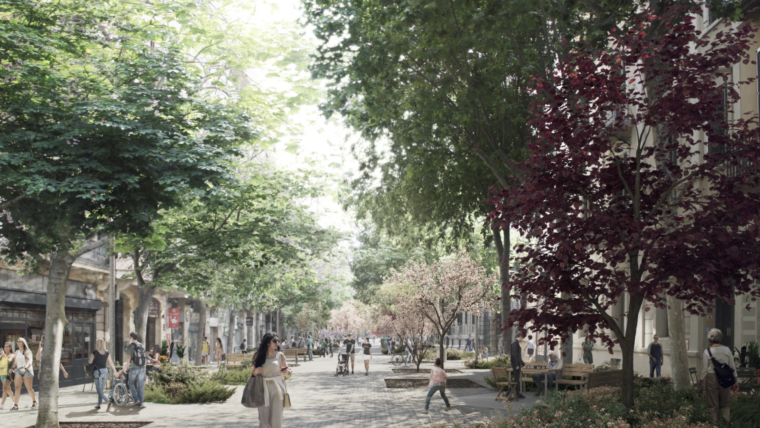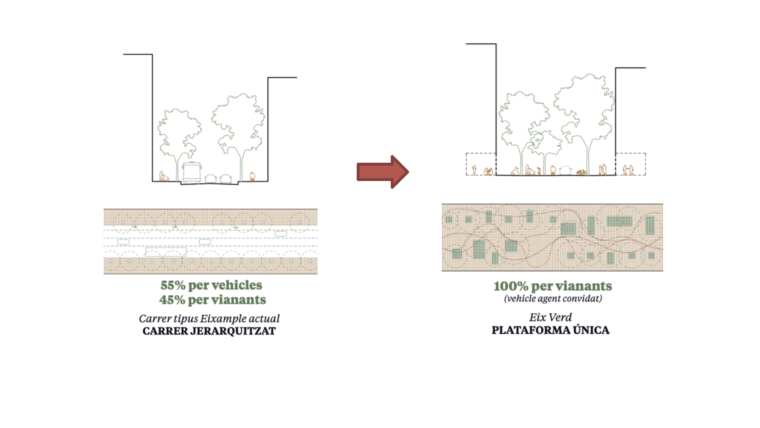City streets get a 21st century look
Following on from the superblocks in Poblenou, Sant Antoni and Horta, the model for the transformation of the city’s streets is to be implemented in L’Eixample with four new green streets and four new squares which put people at the centre of things, stimulate local commerce and cut pollution and noise.The proposal is the result of the work by the four winning teams for the green streets competition and will be applied in the streets of Consell de Cent, Girona, Rocafort and Comte Borrell. This will be the first step in rolling out the superblock model around the area in Cerdà’s street plan, representing a change of paradigm compared to how urban planning and public space had been conceived until now.
While the urban model which dominated in the past was one streets serving cars, the model to be implemented from now on for all green streets in the Barcelona superblock will give pedestrians absolute priority, with vehicles becoming guests. Cars will only be able to circulate in exceptional cases, at low speeds and without any straight sections to use. Streets will thus have a social use and foster local commerce, façade to façade, thanks to the introduction of curbless paving. This will also allow people to enjoy all available space, with no difference between the heights of pavements and road surfaces.
More sustainable and innovative
The streets of the 21st century will move away from an impermeable compressed subsoil which disregards rainwater, instead adopting a fertile and permeable subsoil which allows greenery and trees to prosper and manages 30% of rainwater. Trees will also take on greater importance (shifting from 1% of the surface area to at least 10%), while solar panelling will also be introduced to generate power for the consumption of the street itself, for lighting and nearby municipal facilities. Lighting is actually another element which will be changed, with new lampposts to be lower and located in central parts of the street to foster social uses.
Streets will also be 100% accessible, enabling everybody to get around and spend time in them, with more urban furniture added (benches, water springs, play areas and tables), children’s play areas and spaces for people to relax in.
Work is due to get under way in June next year, with an investment of 37.8 million euros, and conclude in the first quarter of 2023. In the future, the goal is to roll out the model in 21 streets in the district of L’Eixample, meaning one in three green streets. In addition, with 21 squares to be generated at junctions, every resident in the district will have one of these streets or squares within 200 metres of their home.




Further information
Tags associated with the news item
Related news
-
 Urban planning and infrastructures
Urban planning and infrastructures
Urban planning and infrastructures
Urban planning and infrastructuresOn 8 June, the Barcelona Superblock project will be presented to the public
01/06/2021 15:00 h
-
 Urban planning and infrastructures
Urban planning and infrastructures
Urban planning and infrastructures
Urban planning and infrastructuresIdeas contest to design the Barcelona Superblock resolved
03/03/2021 12:30 h






